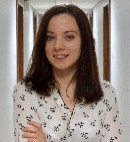Scientific Program

Aleksandra Szelag & Sylwia Nabozna
AGH UST, Poland
Title: Selection of batteries and optimatization of energy consumption during AGH solar plane fight
Biography:
Aleksandra Szelag is ambitious student of the 4th year of Power Engineering on AGH UST. At the second year of studies, she joined to SSC Hydrogenium”. During this two years she was analazying Li-ion batteries and was pariticpated in Project E-Moto in the power and PR section. This year she is responsible for coordianting the AGH Solar Plane. The project creates remotely controlled plane, powered by energy generated by solar panels.
Sylwia Nabozna is student of the 4th year of Power Engineering on AGH UST. Since first year of studies she is a member of SSC „Eko Energia” where she took part in many projects connected with renewable energy and energy storage. In addition, for two year she was a Board member of SSC „Eko Energia”. Now, she works in the SSC “AGH Solar Plane” where she is one of the coordinators. Her team deals with aerodynamics analysis and construction optimization.
Abstract
AGH Solar Plane aims to build an unmanned aircraft powered by solar energy, which without stop will fly over the whole of Poland. In order to minimize the weight of the structure, we attach great importance to energy optimization. Currently, we use Li-ion cells during construction, due to the high gravimetric and volumetric density. In addition, Li-ion batteries have high energy density and working voltage compared to other batteries. The work of such cells is based on the reaction of Li + ion interactions to the anode structure without significant modification. Our research in the field of power supply was based on the selection of cells and then testing them through cycles of alternating charging and discharging. Li-ion cells are used in small devices and portable electronics. They are also used in electric vehicles, robots, as well as energy stores for renewable sources such as wind, water and sun. The Samsung INR18650-35E batteries have been selected. The links provide us with a certain amount of energy that we need to make the most of. The tested cells have a nominal capacity of about 3500 mAh, during tests it was found that they have a smaller capacity, but this is within the error limits. The discharge curve of the first and tenth cycle coincide. Unfortunately, this turns out to be too little for our needs, which is why we are working on optimizing the available energy as much as possible through:
• selection of appropriate wings to reduce the occurrence of air resistance,
• application of the MPPT regulator, allowing for the use of energy to occur throughout the period of operation at the highest point,
• use for building ultra-light materials,
• application of the Battery Managment System, for simultaneous charging of solar cells and providing energy for current needs during the flight.
In addition, the project also takes into account the use of lithium-sulfur cells due to the large capacity.
- Trends in Renewable Energy
- Green Energy and Economy
- Advanced Materials for Energy Storage, Generation and Transmission
- Hybrid Renewable Energy Approaches
- Biofuels, Bioenergy and Sustainable Nuclear Energy
- Solar, Wind and Marine Energy
- Hydro Power Generation and Geothermal Energy
- Waste to Energy and Smart Grid Systems
- Global Impacts of Using Non-Renewable Resources
- Fossil and Radioactive Fuels
- Petroleum Engineering and Natural Gas Recovery

